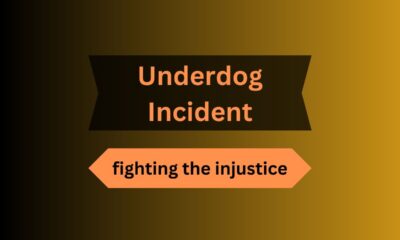Politics
Empowering Voter Participation in State and Local Elections

Key Takeaways:
- Voter participation is a crucial element of democratic societies.
- Community involvement and education can boost turnout in state and local elections.
- Understanding the voting process helps in more informed electoral choices.
Table of Contents:
- Understanding Voter Engagement
- The Role of Civic Education
- Challenges to Voter Turnout
- Strategies to Increase Participation
- The Impact of Community Initiatives
- Technological Innovations in Voting
- Real-Life Examples of Successful Engagement
- Resources for Voter Information
Understanding Voter Engagement
Voter engagement represents a fundamental aspect of effective democracies, underscoring the importance of active citizen participation in elections. It involves voting and being informed about the candidates and policies that will shape communities. This process ensures that a wide array of voices is heard, leading to more representative and accountable governance. The availability of local election candidate information is instrumental in empowering voters. By equipping them with knowledge about who is running for office and what they stand for, citizens can make discerning decisions that resonate with their personal and community values.
Furthermore, engaging voters can help mitigate the disconnect between the government and the governed. It prompts responsibility and responsiveness from elected officials when they know citizens are actively monitoring their positions and performance. In short, voter engagement is about casting a vote and fostering a symbiotic relationship between the electorate and policymakers for better governance.
The Role of Civic Education
Civic education enhances voter engagement by imparting essential knowledge about civic duties and election processes. By understanding how government systems work, citizens become more empowered to engage in the political process effectively. By bridging the divide between politicians and the general public, educational initiatives in communities and schools seek to make voting less intimidating and more relevant.
These courses frequently include various subjects, from comprehending complicated policy concerns to learning how local governments function. These educational initiatives aim to prepare the electorate to participate actively and make informed choices at the polls by focusing on practical knowledge and critical thinking. By demystifying the electoral process, civic education fosters a more engaged and knowledgeable voter base that can articulate its needs more effectively.
Challenges to Voter Turnout
Despite the recognized importance of voter participation, several obstacles continue to hinder turnout rates. These include complex registration processes, a lack of accessible polling stations, and prevalent voter apathy. Research by institutions such as the Pew Research Center highlights these challenges and provides data-driven insights into how they can be addressed.
Additionally, socio-economic factors and stringent voter ID laws can further complicate voting logistics, particularly for marginalized communities. Developing solutions that guarantee every qualified voter has the chance to engage fully requires an understanding of these obstacles. By addressing challenges head-on, communities can work towards a more inclusive electoral environment encouraging greater participation.
Strategies to Increase Participation
To increase voter participation, it is imperative to implement strategies that simplify and promote the voting process. Removing unnecessary complexities from voter registration and ensuring ample polling places can significantly reduce barriers. Flexible voting options, such as early voting and mail-in ballots, can also accommodate those unable to vote on Election Day.
Another effective strategy is mobilizing younger voters through targeted social media campaigns that speak their language and address their concerns. Organizations and advocacy groups can foster a civic duty and engagement culture by leveraging platforms popular with younger generations. By successfully bridging the gap between voter intentions and actual involvement, these tactics can promote more robust democratic processes.
The Impact of Community Initiatives
Community-driven initiatives have a longstanding history of boosting voter participation and awareness. Voter registration campaigns and community forums improve the election experience by providing places for discussion and education. These local efforts are crucial for building trust and promoting transparency in the electoral process.
These efforts can address concerns and ambiguities surrounding elections by fostering a sense of community involvement and making the process more accessible to the general population. They enhance voter turnout and strengthen the fabric of community solidarity and collective action. Such initiatives underscore the power of grassroots movements in transforming electoral landscapes.
Technological Innovations in Voting
Technology advances have revolutionized how elections are conducted and how citizens can participate. Online voter registration systems and electronic voting machines are two examples of technology making voting more accessible and efficient. These innovations minimize logistical challenges and increase the convenience of participating in elections.
Organizations like the National Conference of State Legislatures explore these technological advancements to assess their effectiveness and potential for broader implementation. By continuously refining these systems, the hope is to create a seamless voting experience that encourages higher participation and instills confidence in the electoral process.
Real-Life Examples of Successful Engagement
Successful campaigns across different regions have shown that strategic community engagement can significantly increase voter turnout. In one instance, a town significantly improved turnout rates through dedicated community meetings and mobile voting centers, demonstrating the efficacy of targeted outreach efforts.
Highlighting these successful examples inspires and provides a blueprint for other communities aiming to achieve similar results. By learning from these experiences, different regions can tailor strategies to fit local needs, fostering a culture of informed and active citizenry.
Resources for Voter Information
Multiple resources provide reliable data and guidance for those seeking additional information on voting and elections. Official state and federal election websites offer comprehensive details on voting procedures, registration requirements, and election dates, ensuring voters have the most up-to-date information.
Additionally, educational nonprofits work tirelessly to disseminate unbiased election-related content, empowering voters with the information necessary to make decisions at the polls. These resources are fundamental to nurturing an informed electorate capable of making choices that reflect their values and aspirations.

-

 Entertainment5 months ago
Entertainment5 months agoBest Kickass Proxy List 2024 – 100% Working to Unblock to Access
-

 Lifestyle5 months ago
Lifestyle5 months agoBanging The Underdog Incident 2022
-

 Entertainment5 months ago
Entertainment5 months ago70+ TamilMV Proxy (May 2024) 1TamilMV Mirrors To Unblock
-

 Entertainment5 months ago
Entertainment5 months ago38+ TamilRockers Proxy (May 2024) New Links To Unblock
-

 Entertainment5 months ago
Entertainment5 months agoBest Piratebay Proxy List 2024 – 100% Working Sites
-

 Blog3 months ago
Blog3 months agoCy Kass – Family Detail of Alex Wagner and Sam Kass
-

 Blog2 months ago
Blog2 months agoVyvyManga – Best Website to Read Manga Online
-

 Game1 month ago
Game1 month agoCookie Clicker Unblocked – Detailed Guide To Play This Game



